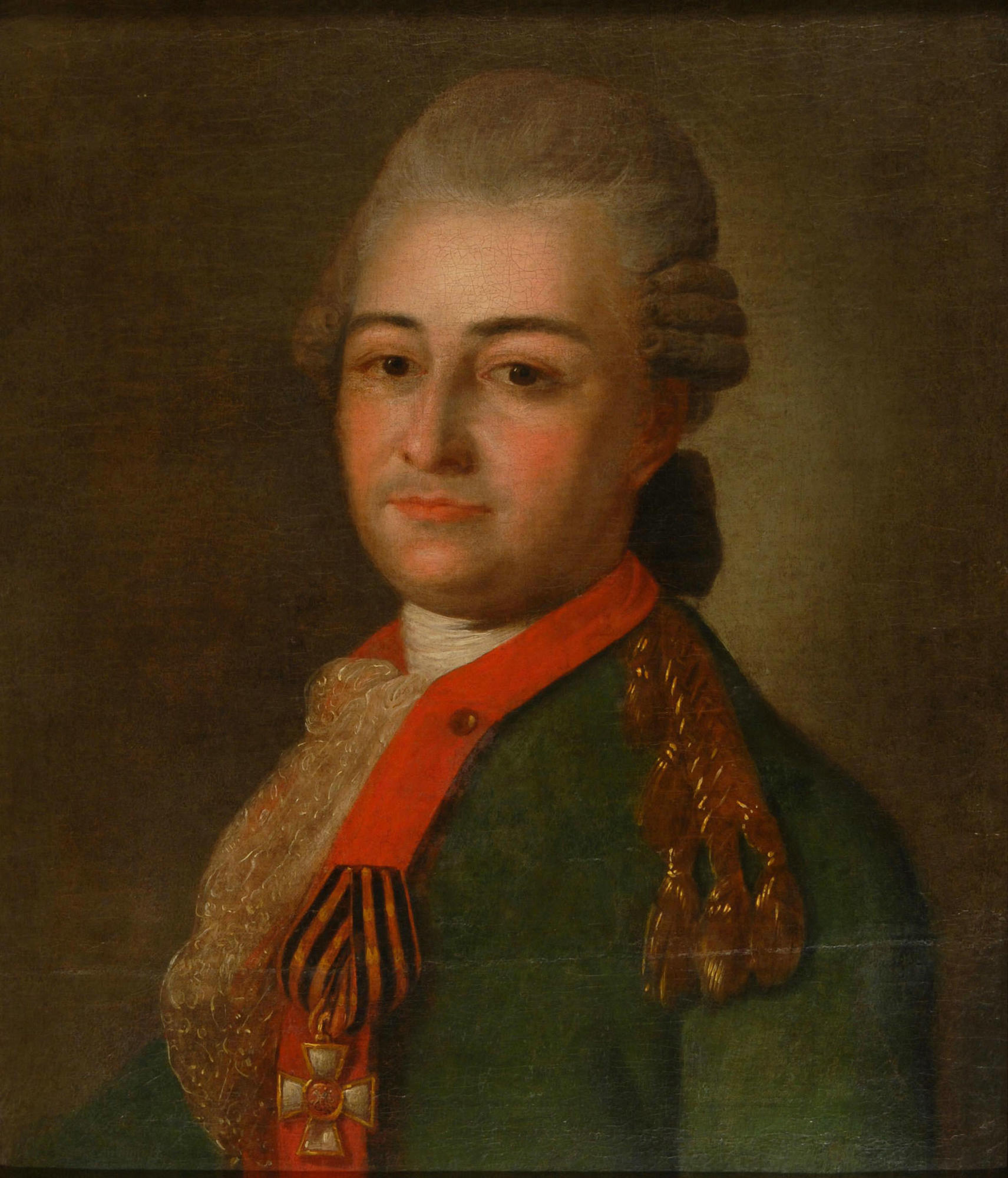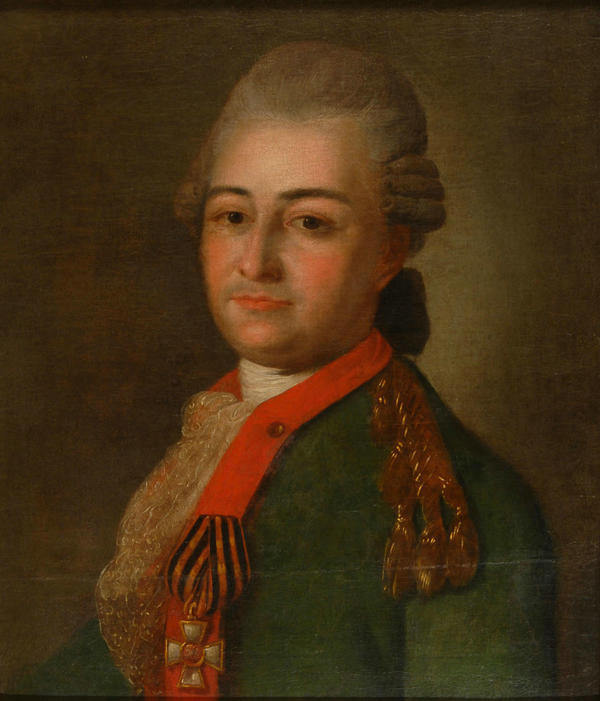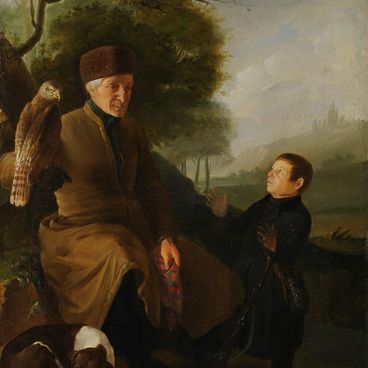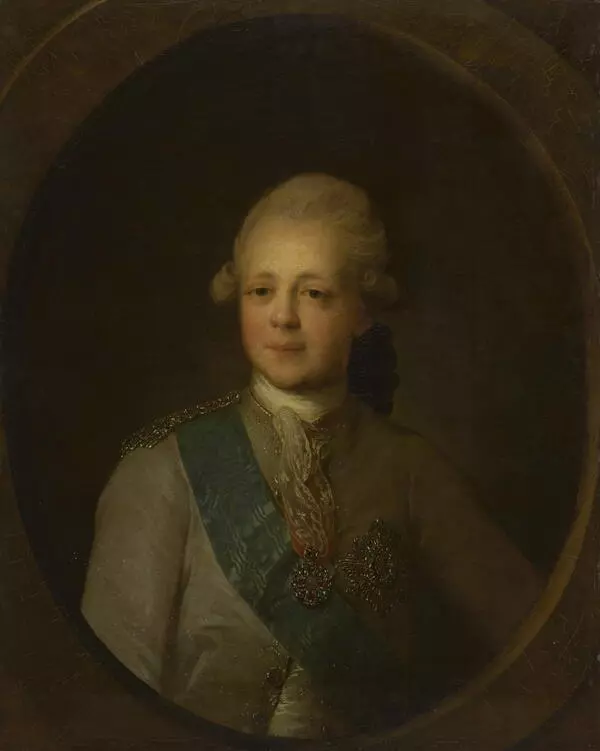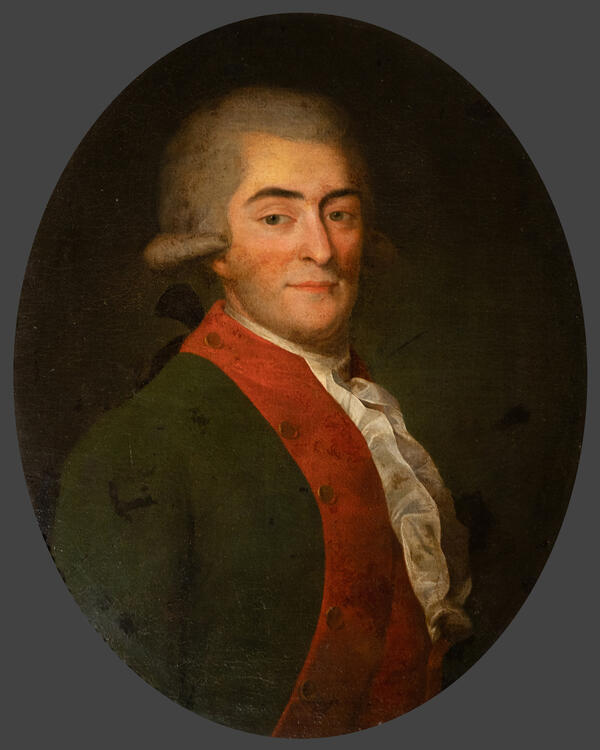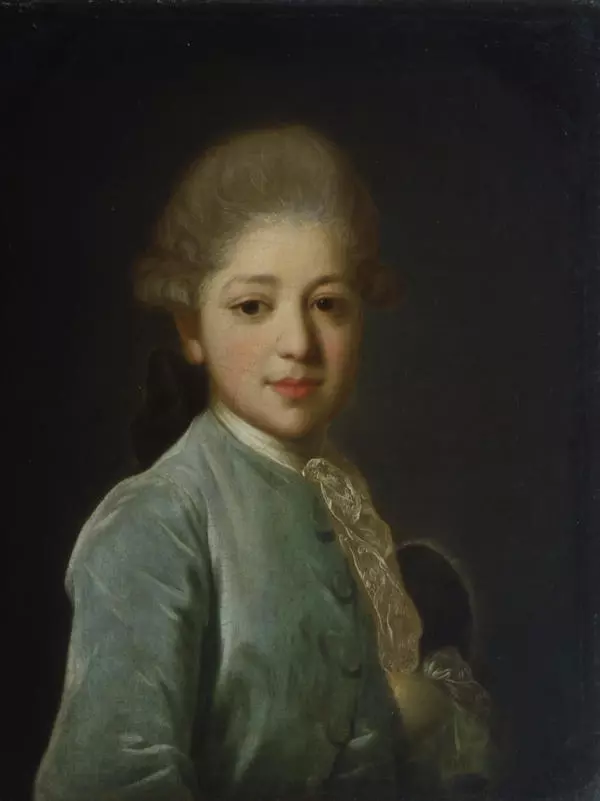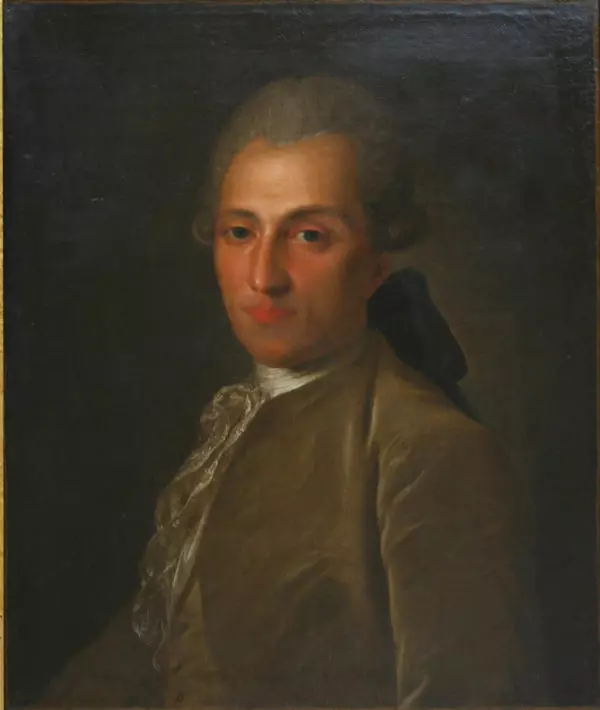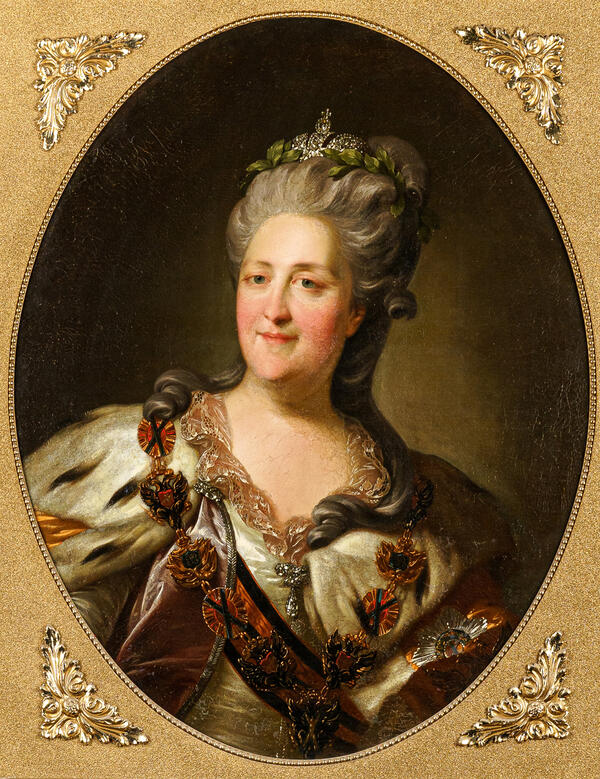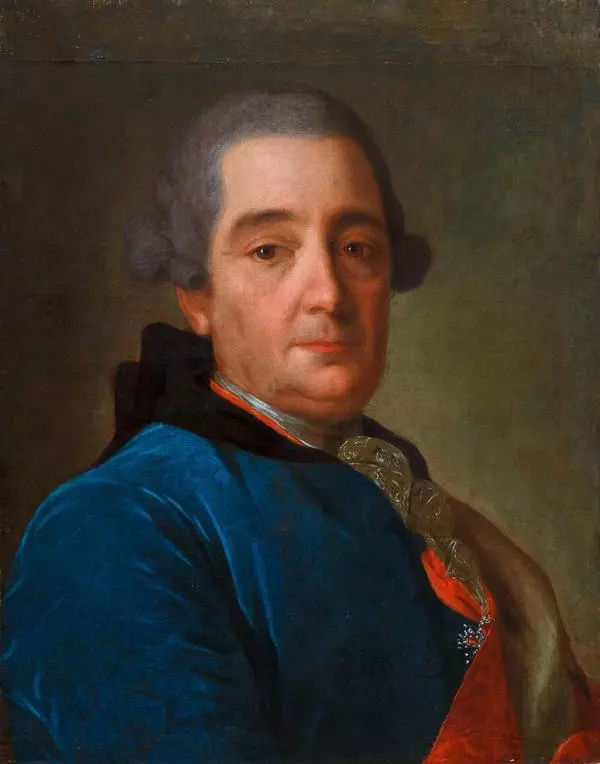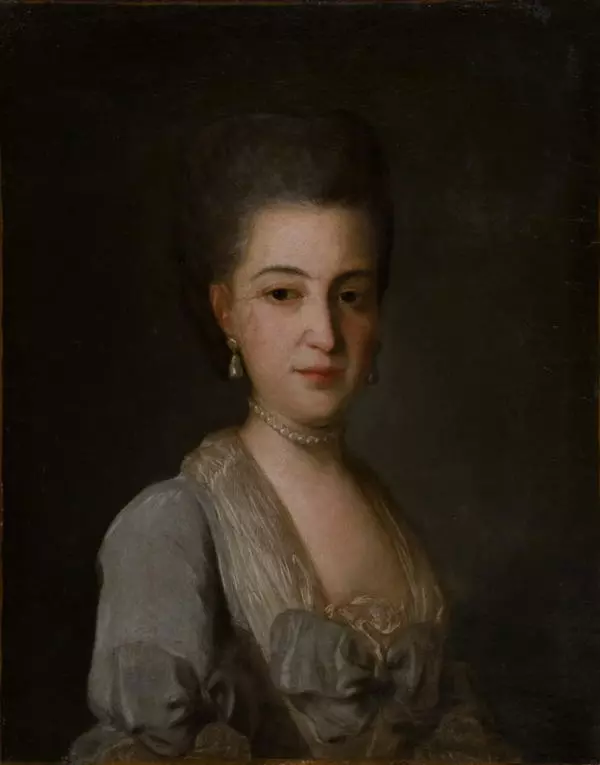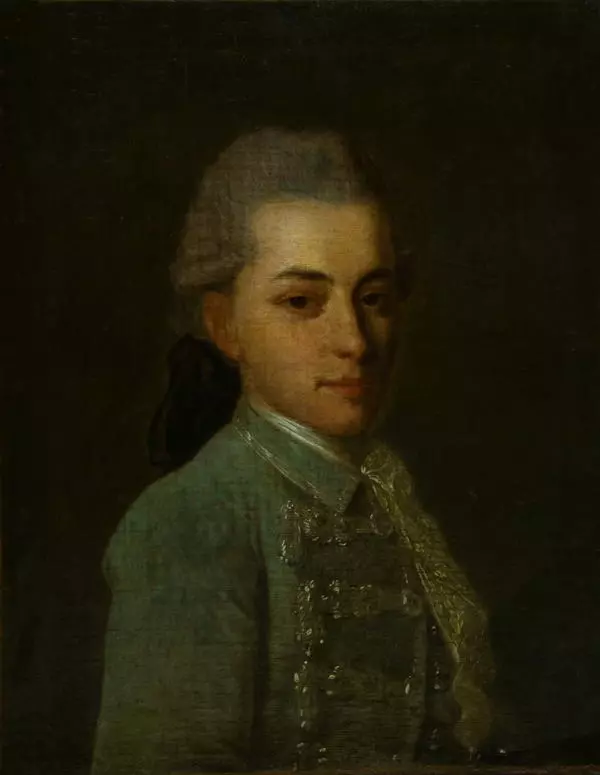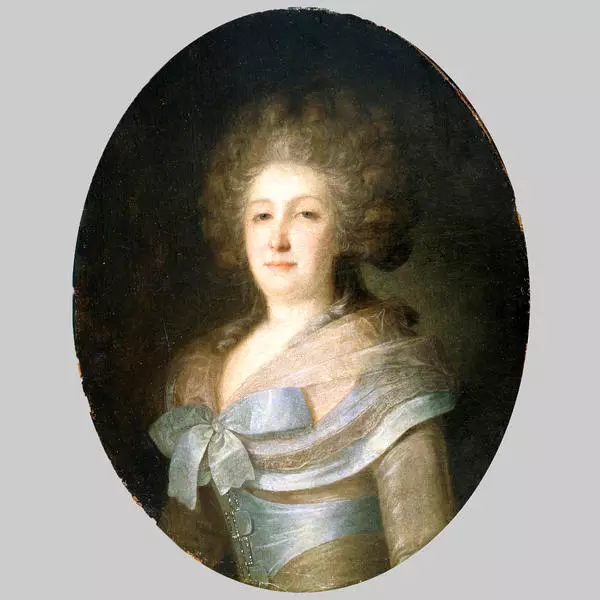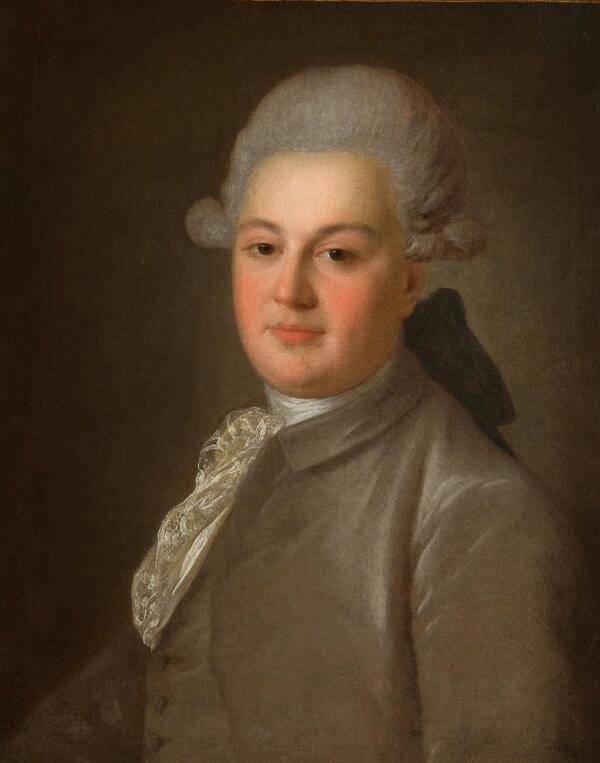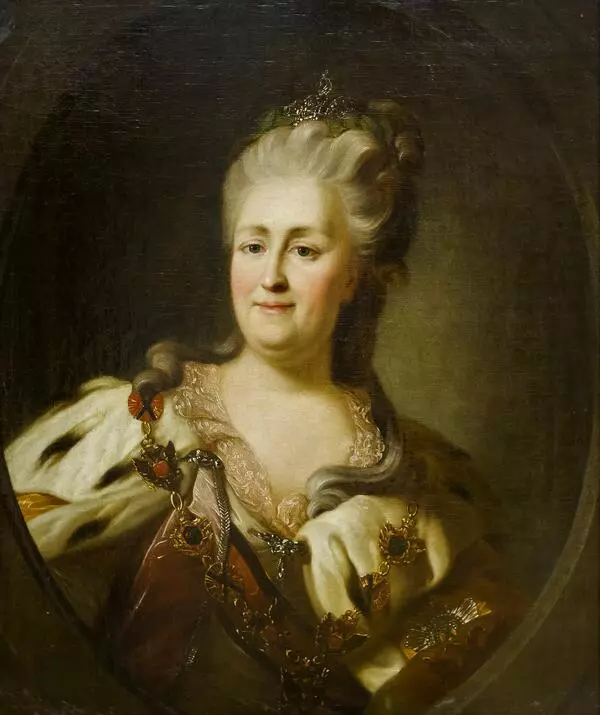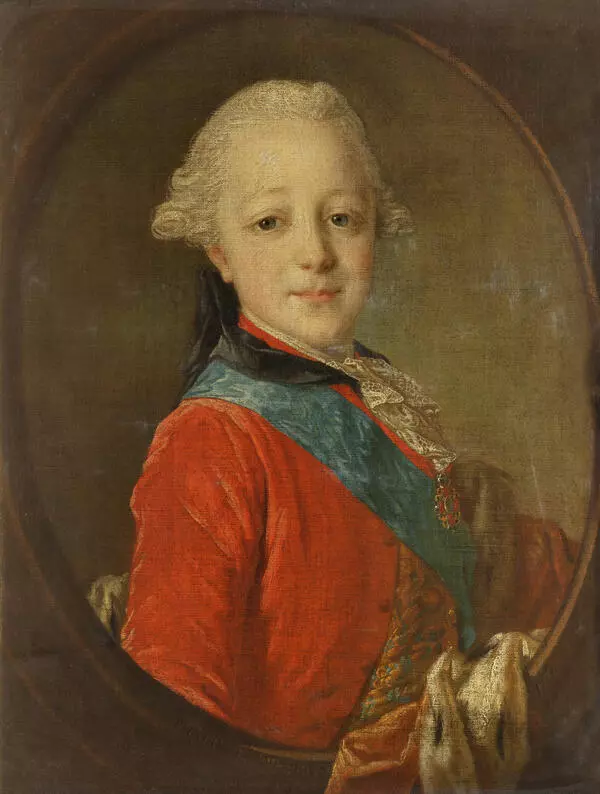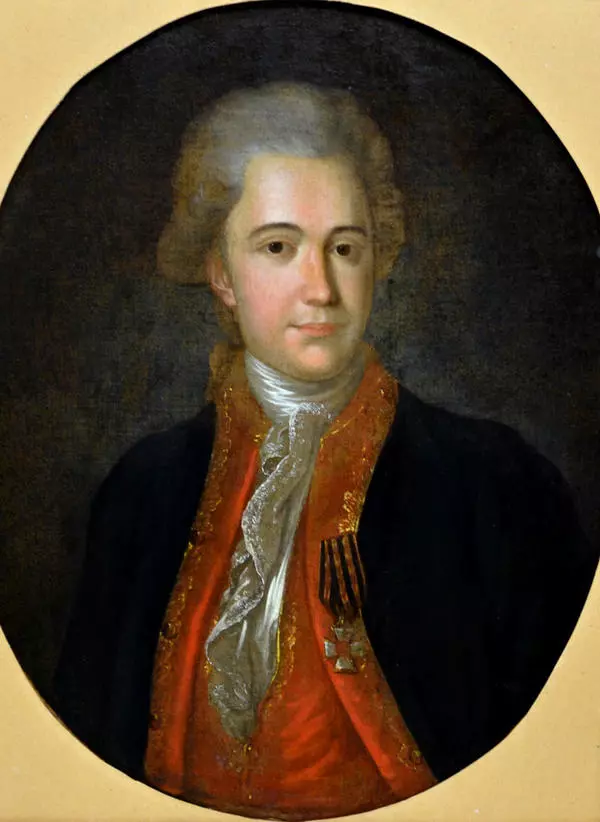When the portrait was presented to the Museum at the beginning of the XX century, experts could not immediately determine neither the author nor the main character depicted in it. Having studied its artistic style and manner of presentation, experts suggested that the author could be Fedor Rokotov. The latter was confirmed only in 1990, after an expertise performed in the lab of the State Hermitage.
Rokotov was an outstanding artist of the XVIII century. His works of art were immensely popular with the Moscow and Saint Petersburg elite, whose representatives would commission their portraits, including grand portraits, from him. In the words of Rokotov’s contemporaries the artist would have up to 50 portraits in work at the same time.
It had long remained a puzzle as to who exactly was depicted in the portrait. Researchers found, that the young officer posing for this portrait, was the member of the well-known Akinfov family.
At the Taurida Palace Exhibition (Tavricheskaya Exhibition) in 1905 it was presented as the portrait of Yurii Akinfov, which was later proved false, as neither the uniform nor the decorations of the officer, depicted in the portrait, matched the deeds and service merits of Yurii Nikolayevich. In the Russo-Turkish War he fought in the battle of Cesme, therefore he was an officer of the Navy and could not have worn an Army Forces uniform.
The officer in the portrait is decorated with the Order of Saint George, an award instituted by Catherine II in 1769. The Order was awarded for heroic deeds on the battle field and time-in-grade. It became known that it was Second Major Petr Akinfov, who was one of the commander recipients of the Order in 1771. It is upon this revelation that experts could actually prove that the officer depicted in the portrait was indeed Petr Alekseyevich.
Rokotov was an outstanding artist of the XVIII century. His works of art were immensely popular with the Moscow and Saint Petersburg elite, whose representatives would commission their portraits, including grand portraits, from him. In the words of Rokotov’s contemporaries the artist would have up to 50 portraits in work at the same time.
It had long remained a puzzle as to who exactly was depicted in the portrait. Researchers found, that the young officer posing for this portrait, was the member of the well-known Akinfov family.
At the Taurida Palace Exhibition (Tavricheskaya Exhibition) in 1905 it was presented as the portrait of Yurii Akinfov, which was later proved false, as neither the uniform nor the decorations of the officer, depicted in the portrait, matched the deeds and service merits of Yurii Nikolayevich. In the Russo-Turkish War he fought in the battle of Cesme, therefore he was an officer of the Navy and could not have worn an Army Forces uniform.
The officer in the portrait is decorated with the Order of Saint George, an award instituted by Catherine II in 1769. The Order was awarded for heroic deeds on the battle field and time-in-grade. It became known that it was Second Major Petr Akinfov, who was one of the commander recipients of the Order in 1771. It is upon this revelation that experts could actually prove that the officer depicted in the portrait was indeed Petr Alekseyevich.
